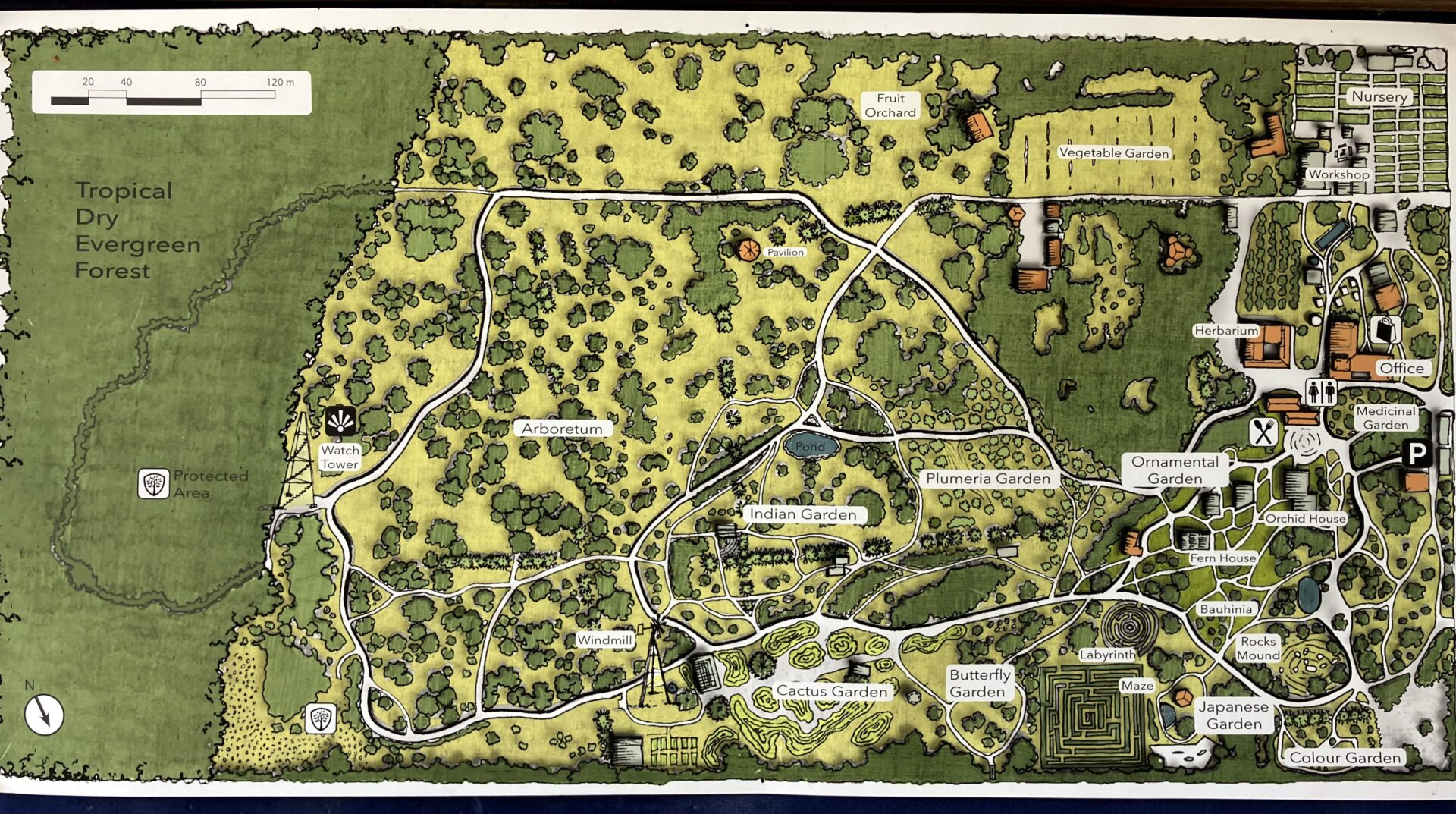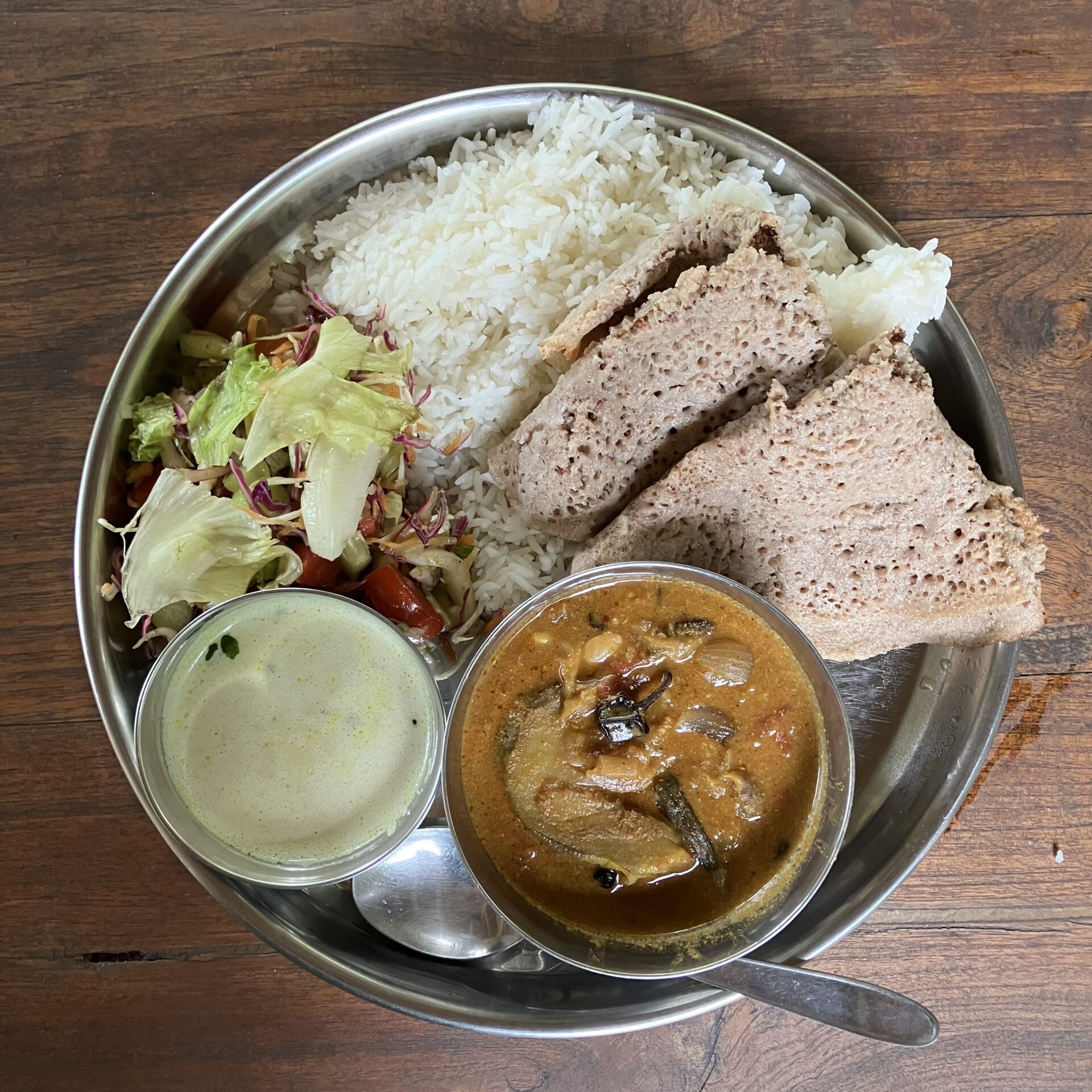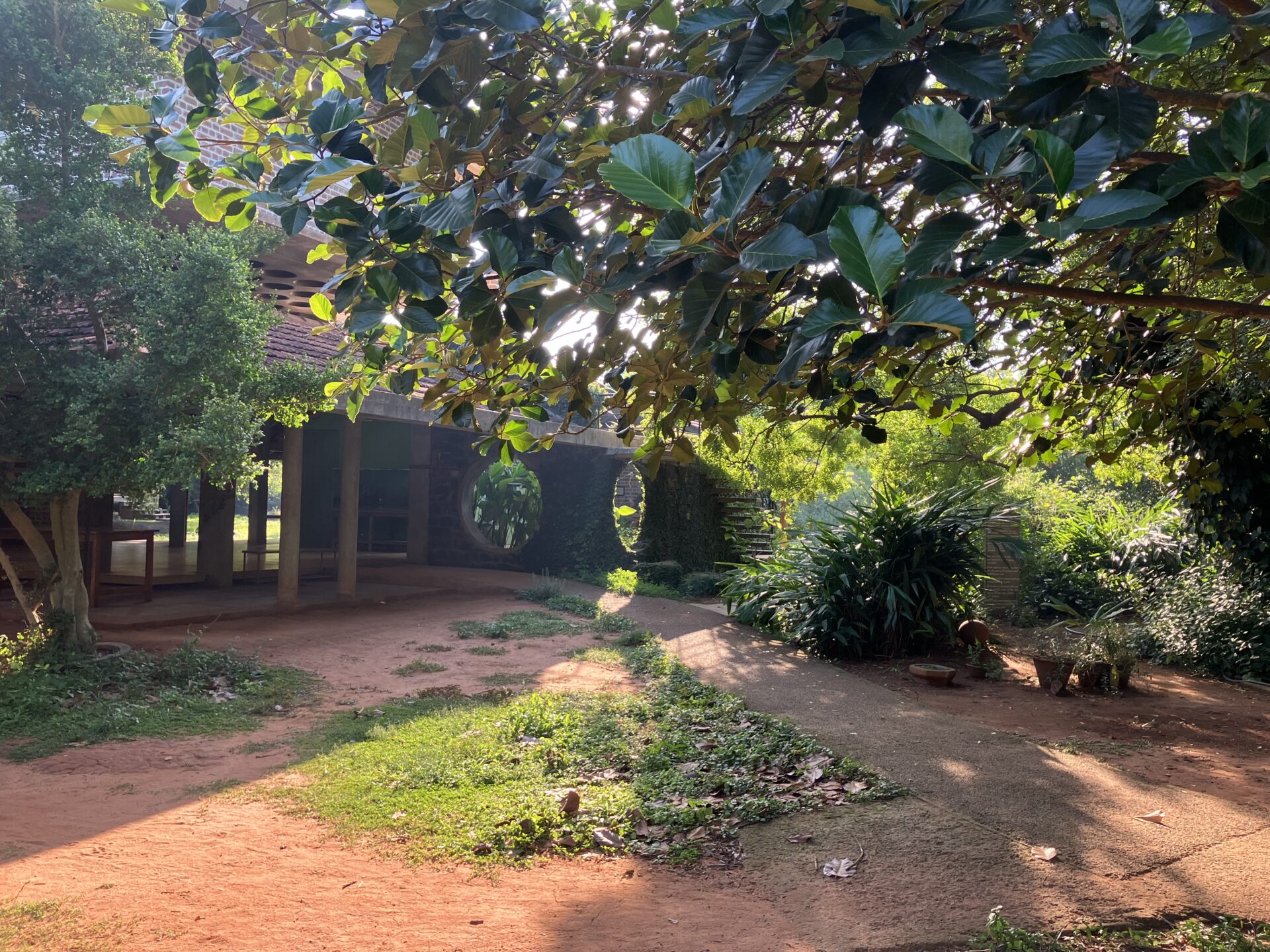Infos von April 2024
Leitbild
Beitrag zur Erhaltung der biologischen Vielfalt des Planeten unter besonderer Berücksichtigung der einheimischen Vegetation der Südindischen-Küstenregion, die gemeinhin als tropischer immergrüner Trockenwald (TDEF) bekannt ist.
Hintergrund
Die Gärten wurden im August 2000 auf einem 50 Acres großen Grundstück in der internationalen Gemeinde Auroville in Tamil Nadu, Südindien, eingerichtet. In den letzten 15 Jahren hat sich das Gebiet zu einem pulsierenden und schönen Ort entwickelt, der sich der Förderung des Bewusstseins für Umwelt und Naturschutz verschrieben hat. Es gab bereits über 50.000 Besucher, hauptsächlich Schulkinder, die an unseren Umweltbildungsprogrammen teilgenommen haben.
Personal in den Gärten
In den Gärten arbeiten etwa 60 ständige Mitarbeiter, welche im Office, im Garten, im Workshop und in der Küche arbeiten.
Aktivitäten in den Gärten
Im Garten gibt es 3 Haupttätigkeitsbereiche – Entwicklung der Gärten, Bildungsprogramme und externe Projektarbeit.
Instandhaltung Die Entwicklung der Gärten hängt in hohem Maße von den uns zur Verfügung stehenden finanziellen und personellen Ressourcen ab, die beide im Laufe der Zeit schwanken. Wir haben bereits eine Reihe von spezialisierten Gärten und große Teile des Arboretums und des Naturschutzgebietes entwickelt. Es gibt jedoch noch eine Reihe von Bereichen, die neue Entwicklungen und den Einsatz von Energie und Ressourcen erfordern. Im Laufe der Jahre werden wir immer mehr Energie in die Pflege und Verbesserung der bestehenden Gebiete stecken und mit den Unwägbarkeiten des Klimas fertig werden müssen (z. B. mit den Vyvlonschäden im Jahr 2012). Darüber hinaus suchen wir ständig nach Möglichkeiten, unsere Infrastrukturressourcen in Form von Gebäuden und Maschinen auszubauen und zu verbessern.
Die Bildungsprogramme richten sich in erster Linie an die örtlichen Schulen, die Gruppen von etwa 30 Kindern in die Gärten bringen und ihnen einen Tag lang Erfahrungen mit der Natur vermitteln. Wir veranstalten auch Wochenend- und Sommercamps, Fahrradrallyes und andere Veranstaltungen, um das Umweltbewusstsein in der Region zu stärken. Gegenwärtig nehmen wir jährlich etwa 3 000 Schüler auf, und wir wollen diese Zahl verdoppeln, sobald wir eine angemessene Finanzierung gesichert haben.
Externe Projekte stellen die finanziellen Mittel bereit , die wir für die Durchführung der beiden anderen Aktivitäten – Entwicklung und Bildung – benötigen. Wir führen eine Reihe von Beratungs- und Umsetzungsprojekten mit einem breiten Spektrum von Kunden durch, die sich für ökologische Praktiken und nachhaltige Landschaftsgestaltung interessieren. Wir fördern die Verwendung einheimischer Baum- und Straucharten bei der Bepflanzung von Ökoparks, Hotel- und Resortlandschaften, Fabrikgeländen und Privatgrundstücken.
Allgemeiner Überblick über die Gärten

Die Gärten sind in fünf Hauptkategorien unterteilt:
- Campus: Dort befindet sich die Offices, das Herbarium und die Küche. Es ist das Zentrum vom Botanischen Garten, da hier die meisten Leute arbeiten und man hier zu Mittag isst. Außerdem arbeitet man hier am Nachmittag in einem der Offices.


- Spezialisierte Gärten: Diese Gärten erstrecken sich über etwa 5 Hektar und umfassen derzeit Sammlungen von Orchideen, Kakteen, Plumeria, Farnen, Gräsern, Zierpflanzen sowie Gärten für Schmetterlinge und Heilpflanzen. Außerdem gibt es ein 1500 m² großes Labyrinth mit einheimischen Sträuchern.
- Arboretum: Der größte Teil des Botanischen Gartens umfasst 25 Hektar und beherbergt 300 verschiedene Baumarten sowie viele Sträucher aus der ganzen tropischen Welt mit ähnlichen klimatischen Bedingungen wie bei uns. Die Bäume sind in großen Abständen gepflanzt, so dass jeder Baum sein volles Potenzial entfalten kann.
- Tropical Dry Evergreen Forest): Dieses Gebiet erstreckt sich über 10 Hektar auf der Ostseite und grenzt an ein größeres Waldschutzgebiet an, so dass die Öffentlichkeit die Möglichkeit hat, die natürliche Vegetation dieser Region zu erleben, die in der freien Natur fast ausgestorben ist. Man verirrt sich eigentlich nur selten in diesen Bereich, aber es ist schön ab und zu mal durch zu laufen. Am Eingang ist auch der
- Baumschule (Nursery): Sie erstreckt sich über ca. 1 Hektar und produziert jährlich etwa 50.000 Pflanzen, die in den Gärten verwendet oder an externe Projekte verkauft werden, die an der Verwendung trockenheitstoleranter Arten aus dem TDEF interessiert sind.
Websites des Botanischen Gartens:
Our Project – Auroville Botanical Gardens